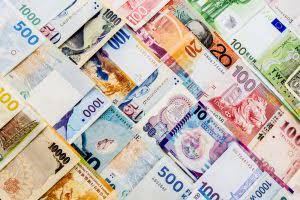
The MM abbreviation works whether the entry is in dollars, some other currency or millions of items or customers. Knowing how to “talk the talk” will allow you to focus less on accounting definitions and more on the important training you’ll need to launch a successful accounting career. You can see it on ancient French and British ledgers from the 18th and 19th centuries where “M₤” represents £1000 and “MM₤” is £1million. So the convention of using M for thousands and MM for millions originated in Roman numeral-based accounting. It’s also common to see K used for 1,000 and B for a billion. To avoid confusion, use any and all abbreviations consistently throughout all your financial records.
Understanding MM in Finance: Usage, Differences, and Impact
It is commonly used in financial documents, or when discussing budgets, earnings, or other financial data. And knowing the lingo is an entry-point into the inner circle—an indicator that you truly belong. So if you’re starting to think about pursuing a career in accounting, your first step is to familiarize yourself with some of the basic accounting terms, acronyms and abbreviations in the field.
M vs. MM Abbreviation
This shorthand helps to keep reports concise and easy to read. Understanding the terms ‘M’ and ‘MM’ is essential in many fields, especially in finance and science. They both refer to millions, but their usage can differ, leading to some confusion. To understand MM, we have to go back to the early days of accounting when Roman numerals were used to record ledgers. In this era, M already signified 1,000, while MM denoted 1 million. Does not make any guarantee or another promise as to any results that may be obtained from using our content.
- This uniformity is crucial for analysts and investors who rely on these documents to make informed decisions.
- I decided to take a deep dive into the origins and rationale behind “MM” to better understand this unique element of finance culture.
- It differs from the standard “k” and “M” abbreviations used in the metric system and most other sectors.
- When material document is posted with these movement types, offsetting account is determined from transaction key GBB based on account modifier and valuation class.
- If you had a commercial property valued at $92 million, a modern writer would likely abbreviate the expression by saying it was worth $92M.
- For example, when comparing financial statements from different companies, the use of MM ensures that figures are easily comparable, reducing the risk of misinterpretation.
Asset classes

The seven letters in Roman numerals are I, V, X, L, C, D, and M. These figures have values of 1, 5, 10, 50, 100, 500, and 1,000. Once a number reaches higher than ten, it becomes much harder to count with your fingers. The Romans incorporated seven letters mm in accounting to represent different numbers for a standard counting method to simplify that situation. While you can make MM stand for millions of anything, it’s important that the reader knows whether you’re talking about dollars, euros, units shipped, etc.
Once we are familiar with the concepts, we will further discuss account determination process in a stock movement related transaction. The term “MM” originates from the Roman numeral M, which stands for one thousand. It is commonly used in financial documents, accounting, and stock market where space is a concern. This abbreviation comes from the Latin word “mille,” meaning thousand. In various contexts, like finance, ‘M’ denotes amounts in millions, such as revenues, budgets, or investments. Today, MM remains the standard abbreviation for millions throughout the banking and accounting professions.
what is the correct abbreviation for millions, billions and trillions in a financial context?

For example, if a company has revenue of $45,000,000, it can be written as $45MM. This makes financial documents easier to read and understand, particularly when dealing with large numbers. If a financial statement has a lot of large figures, the accountant may simply dispense with abbreviations. Stating at the top of the report that “all figures are in millions of dollars” should take care of it. What matters is that https://www.bookstime.com/ readers look at the figures and understand the amounts. In the 20th century, the globalization of markets and the rise of multinational corporations underscored the importance of standardized financial reporting.
These Rules Apply to Western Figure Representation

This uniformity is crucial for analysts and investors who rely on these documents to make informed decisions. For example, when comparing financial statements from different companies, the use of MM ensures that figures are easily comparable, reducing the risk of misinterpretation. When material document is posted with these movement types, offsetting account is determined from transaction key GBB based on account modifier and valuation class. As commerce and trade expanded during the Renaissance, the need for more sophisticated financial reporting became apparent. Merchants and bankers required a standardized way to represent large sums of money, leading to https://x.com/BooksTimeInc the adoption of “MM” to denote millions. This period saw the rise of double-entry bookkeeping, a system that revolutionized accounting by providing a clear and systematic method for recording financial transactions.

Not the answer you’re looking for? Browse other questions tagged abbreviationsfinance.
The term MM is used in the finance world to denote one million and is a standard nomenclature used across the globe. It is commonly used in financial documents, contracts, and communication, especially those regarding large monetary amounts. It originates from the Roman numeral, M, for thousand, and MM is used to indicate one thousand thousands, which makes a million.
By employing “MM,” companies can present their financial data in a universally understood format, minimizing the risk of misinterpretation. This is particularly important in cross-border transactions and investments, where accurate financial information is crucial for decision-making. The choice between “M” and “MM” can also be influenced by regional practices and industry standards. In some European countries, for example, “M” is used to denote millions, which can lead to confusion if not clearly defined.







